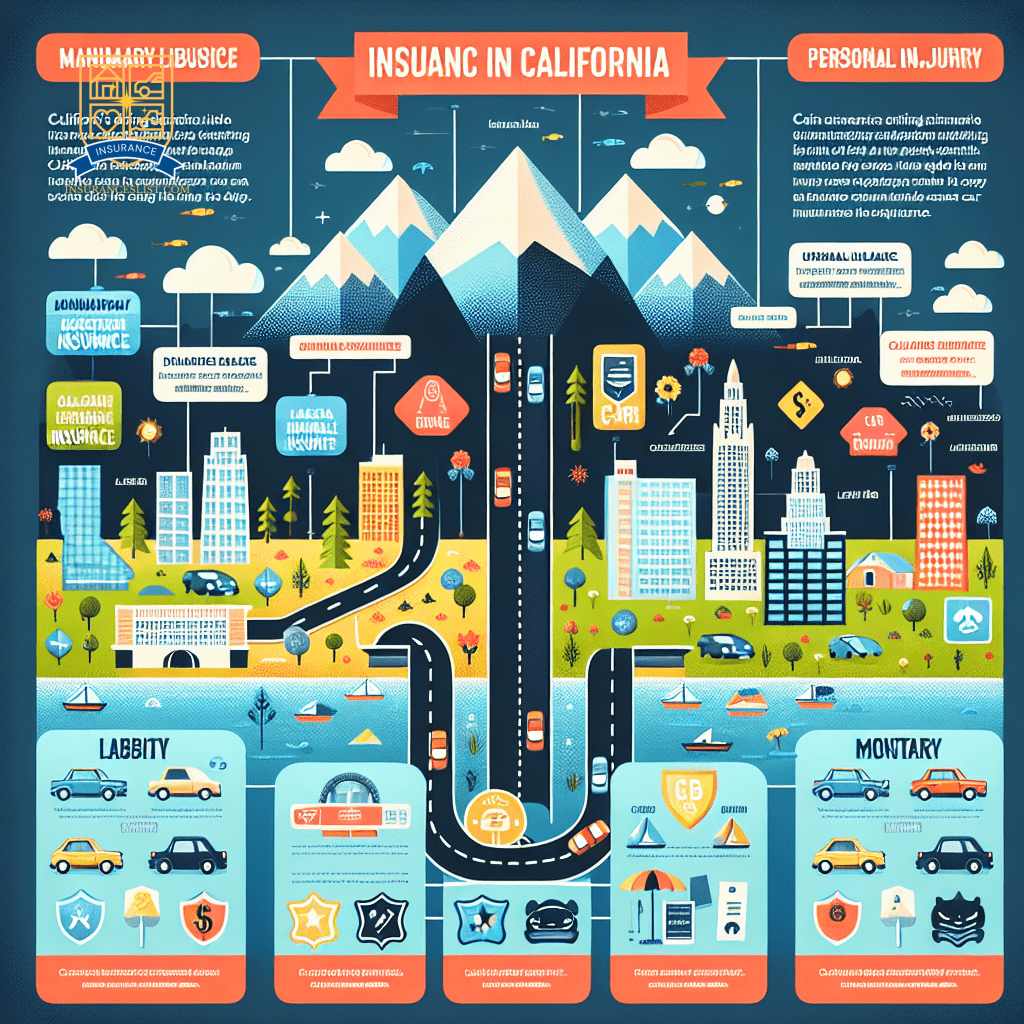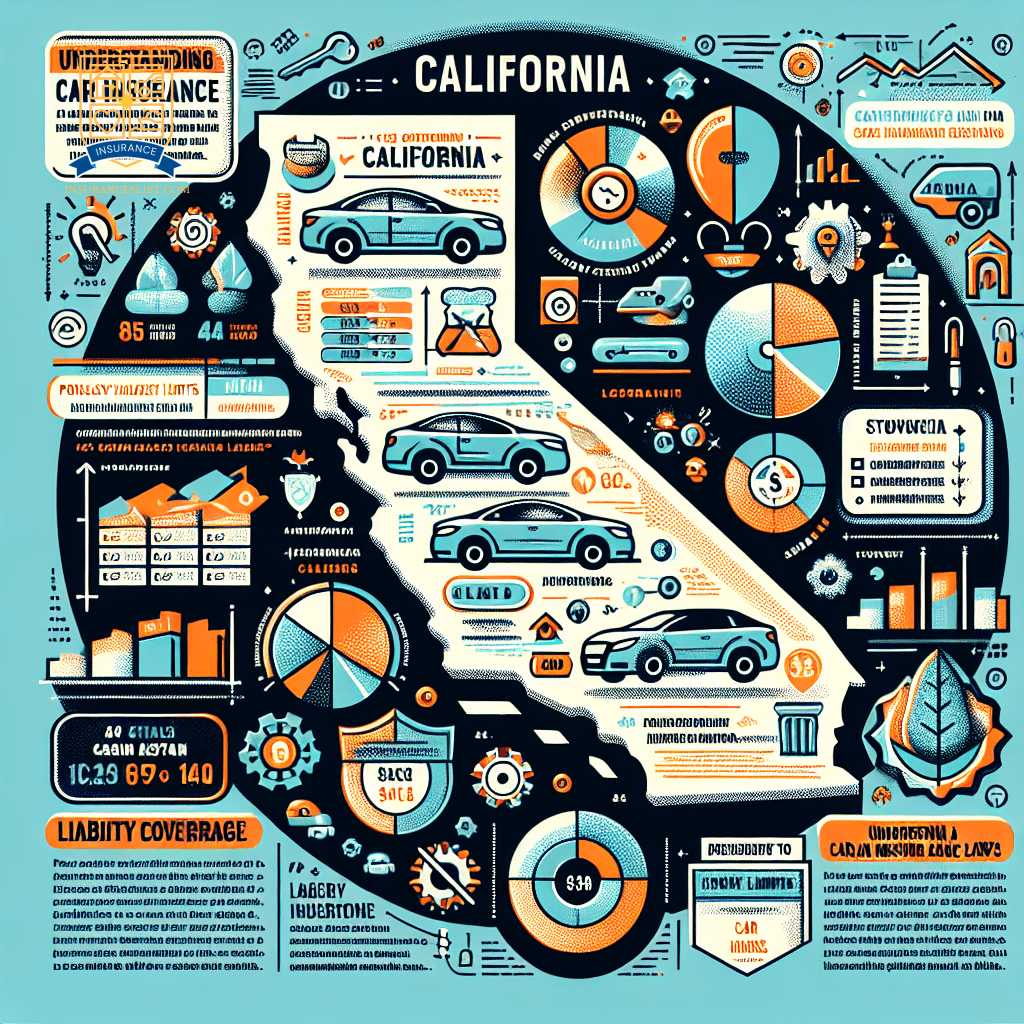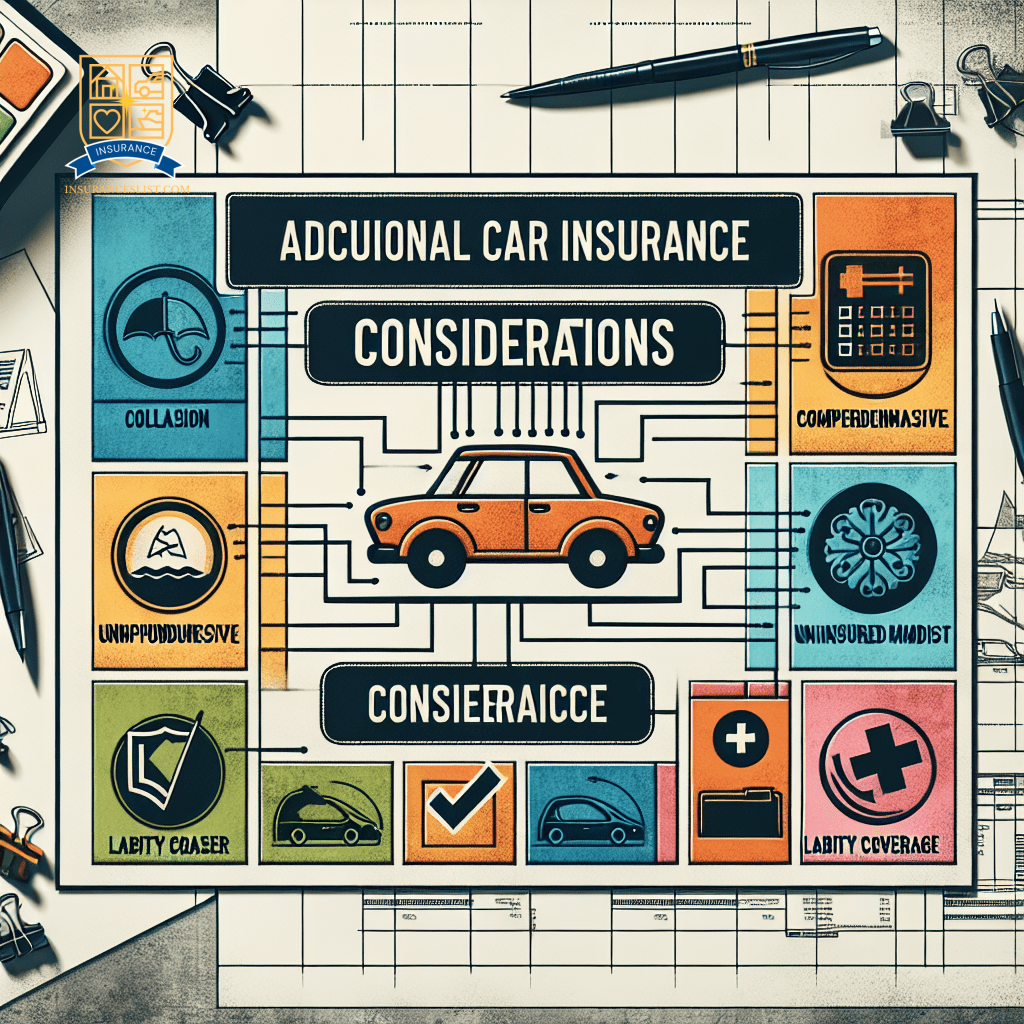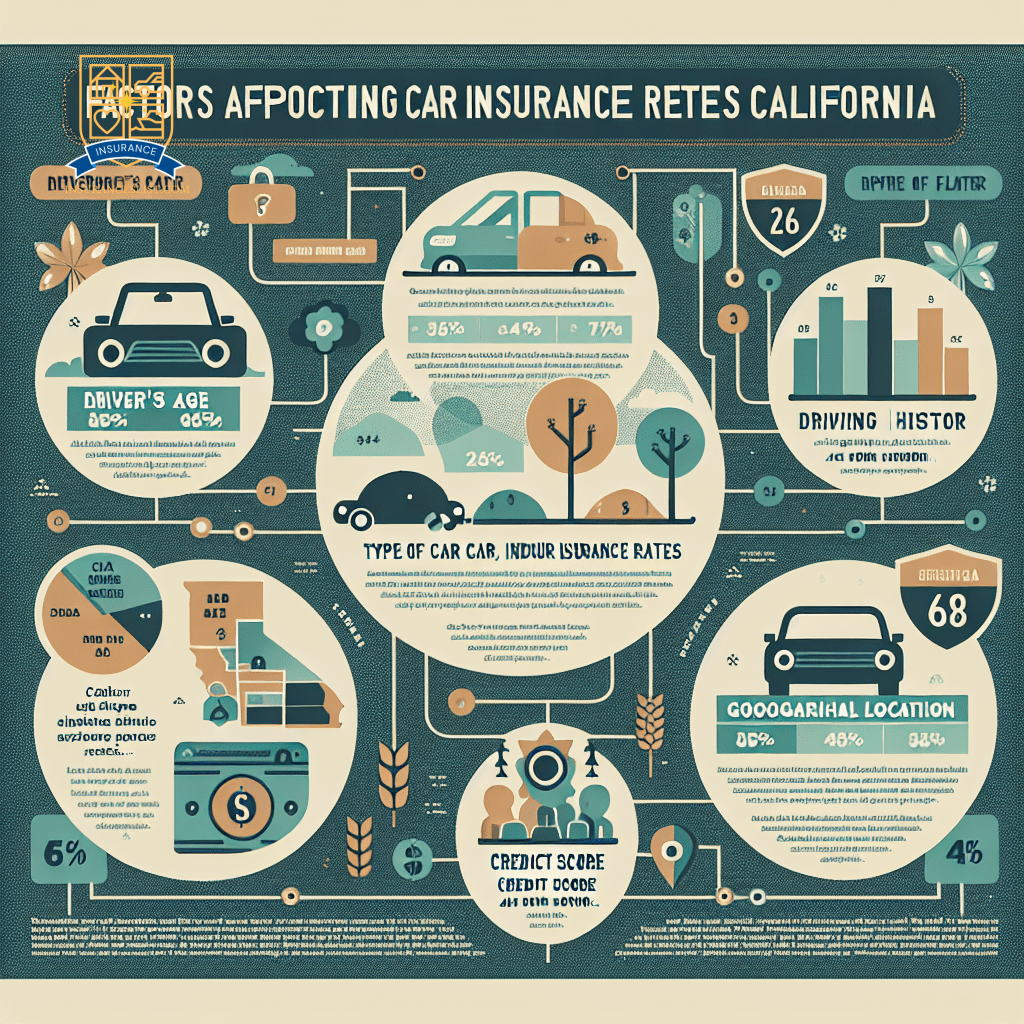Introduction car insurance in California
Auto insurance in California is essential for all drivers, as it offers financial protection in the event of accidents or other unforeseen circumstances. Understanding California’s unique driving environment, which includes heavy traffic and varied road conditions, is vital when assessing insurance coverage. Additionally, California has specific insurance requirements that drivers must follow, making it important to be well-informed about the state’s auto insurance laws.
Brief overview of the importance of car insurance in California

Securing sufficient insurance coverage for your vehicle in California is not only a legal requirement but also an essential safeguard against financial risks associated with driving on the state’s roads. California’s unique driving landscape, which includes busy highways and densely populated urban areas, increases the likelihood of accidents. Having car insurance in California insuranceslist provides protection in the event of property damage, injuries, or legal liabilities resulting from a car accident. Whether you are looking for affordable car insurance in California, seeking a California car insurance quote, or exploring the best auto insurance options in the state, having adequate coverage is vital. Additionally, California auto insurance requirements mandate certain minimum coverage levels to make sure all drivers can meet their financial responsibilities in case of an accident.
Explanation of Californias unique driving landscape and insurance requirements
What factors contribute to the unique driving landscape and insurance requirements in California? California’s driving environment and insurance regulations are influenced by several key elements:
- High Population Density: With over 39 million residents, California’s roads are often congested, leading to increased accident risks.
- Diverse Terrain: From busy city streets to winding coastal highways and mountainous regions, the state’s diverse terrain presents varied driving challenges.
- Stringent Insurance Laws: California mandates drivers to carry liability insurance with minimum coverage limits to guarantee financial responsibility in case of accidents.
These factors combine to create a distinctive driving landscape in California, shaping the state’s auto insurance requirements and rates.
Understanding California Car Insurance Laws

Understanding California car insurance laws is essential for all drivers in the state. California has specific minimum insurance requirements that all drivers must meet, and recent legislation like the Protect California Drivers Act may impact these requirements. Additionally, knowing the distinction between at-fault and no-fault insurance in California is vital for understanding how insurance claims are handled in the state.
Explanation of Californias minimum insurance requirements
California’s minimum insurance requirements serve as a fundamental aspect of the state’s car insurance laws, outlining the essential coverage drivers must maintain to legally operate a vehicle on the roads. When it comes to California auto insurance, drivers must guarantee they meet the following minimum coverage requirements:
- Liability Coverage: This is mandatory in California and helps cover costs associated with property damage and injuries to others in an accident you are deemed responsible for.
- California Low Cost Auto Insurance Program: Designed to assist low-income drivers in meeting the state’s insurance requirements at an affordable rate.
- California Auto Insurance Quotes: It is advisable to obtain multiple quotes to find the best coverage options that comply with California’s minimum requirements.
Discussion of the Protect California Drivers Act and future changes to minimum requirements
Given the evolving landscape of California’s car insurance laws, the discussion now shifts to the implications of the Protect California Drivers Act and potential adjustments to minimum coverage requirements in the foreseeable future. The Protect California Drivers Act aims to enhance the protection of motorists by potentially updating mandatory coverage and liability limits. State legislation may introduce changes to guarantee that drivers have adequate insurance coverage in the event of accidents. Adjustments to minimum requirements could impact the cost and extent of coverage for California auto insurance policies. It is essential for drivers to stay informed about these potential future changes to guarantee compliance with the law and adequate protection in case of unforeseen circumstances.
At-fault vs. no-fault insurance: Californias stance
Exploring the distinction between at-fault and no-fault insurance systems sheds light on California’s approach to car insurance laws. In California, the state follows an at-fault insurance system, where the driver responsible for the accident is liable for the resulting damages. Understanding this system is vital for all drivers in the state. Here are three key points to take into account regarding California’s stance on at-fault vs. no-fault insurance:
- California requires all drivers to carry liability coverage to help pay for damages they cause in an accident.
- The state sets minimum coverage requirements that drivers must meet to legally operate a vehicle.
- When comparing car insurance quotes in California, understanding the at-fault system is essential for selecting the right coverage.
Types of Car Insurance Coverage in California

When considering car insurance coverage in California, it is essential to understand the various types available. Liability insurance, mandatory in California, covers damages to others in an accident. Optional coverages such as all-encompassing, collision, uninsured/underinsured motorist, and medical payments offer additional protection for policyholders. Personal Injury Protection (PIP) plays a specific role in providing coverage for medical expenses regardless of fault in California.
Liability Insurance: What it covers and why its mandatory
Liability insurance in California is a fundamental component of car insurance policies due to its critical role in providing financial protection for drivers in the event of an accident. This mandatory coverage in California guarantees that drivers have the means to cover costs resulting from bodily injury or property damage caused to others in a car accident. Here are three key points about liability insurance in California:
- Mandatory Requirement: California law mandates all drivers to carry a minimum amount of liability coverage to legally operate a vehicle.
- Financial Protection: Liability insurance helps safeguard drivers from potentially devastating financial burdens resulting from accidents they are deemed responsible for.
- Coverage Details: Liability insurance typically includes both bodily injury liability and property damage liability coverage.
Optional Coverages: Comprehensive, Collision, Uninsured/Underinsured Motorist, Medical Payments, and more
In California, car insurance coverage extends beyond liability protection to include optional coverages such as Full Coverage, Collision, Uninsured/Underinsured Motorist, Medical Payments, and more, offering drivers additional layers of financial security and peace of mind. All-encompassing coverage protects against non-collision incidents like theft or vandalism. Collision coverage handles damages from accidents with other vehicles or objects. Uninsured/Underinsured Motorist coverage safeguards against accidents with drivers lacking adequate insurance. Medical Payments coverage assists with medical expenses resulting from a covered accident. These optional coverages provide California drivers with a thorough safety net, ensuring they are well-protected in various driving scenarios. Understanding and selecting the right optional coverages can contribute to a well-rounded auto insurance policy in California.
The role of Personal Injury Protection (PIP) in California
Personal Injury Protection (PIP) in California plays a significant role in providing comprehensive and all-encompassing car insurance coverage for drivers in the state. PIP coverage in California guarantees that medical expenses resulting from an accident are covered, regardless of who is at fault. Here are three key points regarding PIP in California:
- PIP insurance is not mandatory in California, but it can provide valuable additional coverage.
- PIP benefits typically encompass medical expenses, lost wages, and funeral costs.
- California follows a fault-based system, not a no-fault system, so PIP is not considered a no-fault insurance coverage in the state.
Factors Affecting Car Insurance Rates in California

Various factors play an important role in determining car insurance rates in California. Elements such as age, driving history, and the type of vehicle can greatly impact premiums. Additionally, location, gender, marital status, and California-specific considerations all contribute to the varying insurance costs in the state.
How factors like age, driving history, and vehicle type affect premiums
Factors such as age, driving history, and vehicle type play significant roles in determining car insurance premiums in California. When evaluating your premium costs, insurance providers take into consideration the following:
- Age: Younger drivers typically face higher premiums due to their perceived higher risk.
- Driving History: A clean record with no accidents or tickets often leads to lower premiums.
- Vehicle Type: The make, model, and year of your car can impact insurance rates, with luxury or sports cars usually costing more to insure.
These factors are vital considerations for California Drivers Insurance, influencing the cost of coverage, particularly regarding liability coverage and overall premiums.
The impact of location, gender, and marital status on insurance costs
The geographic location, gender, and marital status of an individual are key determinants that heavily influence insurance costs for drivers in California. Gender can impact insurance costs, with statistics showing variations in rates between male and female drivers. Marital status also plays a significant role, as married individuals often receive lower insurance premiums compared to single drivers. Factors such as location within California can also affect insurance rates, with urban areas typically having higher premiums due to increased traffic and crime rates. To find the cheapest car insurance in California, individuals should consider obtaining quotes from various auto insurance companies in California to compare prices and coverage options. This comparison can help in identifying the most affordable car insurance in California.
California-specific factors that influence insurance rates
In California, insurance rates for drivers are influenced by specific factors unique to the state’s regulations and demographics.
- California Minimum Coverage: The state mandates certain minimum coverage requirements that impact insurance rates.
- Urban vs. Rural Areas: Rates may vary based on whether the driver resides in urban or rural regions.
- Traffic Density: Areas with higher traffic congestion tend to have higher insurance rates due to increased risk of accidents.
These factors play a significant role in determining the cost of insurance in California, affecting options such as the best auto insurance California, cheapest auto insurance California, and commercial auto insurance California. Understanding these elements can help drivers find the most affordable car insurance in California.
How to Choose the Right Car Insurance Policy
When selecting the right car insurance policy in California, consider evaluating your coverage needs based on personal and vehicle-specific factors to guarantee adequate protection. Additionally, it is essential to compare quotes from different insurance providers and explore various options before making a decision. Understanding how to qualify for insurance discounts can also help in choosing a policy that offers both suitable coverage and cost savings.
Assessing your coverage needs based on personal and vehicle factors
To choose the appropriate car insurance policy, carefully evaluate your coverage needs based on individual and vehicle-specific factors. When appraising your coverage needs in California, consider factors such as your driving habits, the value of your vehicle, and your financial situation. Here are three key points to keep in mind:
- Determine the level of coverage required by law in California.
- Evaluate your personal assets to determine the amount of liability coverage needed.
- Consider adding inclusive and collision coverage based on the age and value of your vehicle.
The importance of comparing quotes and shopping around
What key factor plays an essential role in selecting the right car insurance policy in California? One of the most important aspects is comparing quotes and shopping around. By obtaining quotes from multiple insurance providers, you can make sure you are getting the best coverage at a competitive rate. To aid in your comparison process, consider factors such as coverage options, deductibles, customer reviews, and discounts offered. Here is a table to help you compare different aspects of car insurance policies:
| Aspect | Description |
|---|---|
| Coverage Options | Types of coverage offered by the insurer |
| Deductibles | Amount you must pay out of pocket before your insurance kicks in |
| Discounts Offered | Special discounts available for policyholders |
Understanding insurance discounts and how to qualify for them
Understanding insurance discounts and the qualifications for them is essential when selecting the right car insurance policy in California. To help you navigate this process effectively, here are some key points to bear in mind:
- Good Driver Discounts: Maintain a clean driving record free of accidents and traffic violations.
- Multi-Policy Discounts: Bundle your car insurance with other policies like home or renters insurance from the same provider.
- Safety Features Discounts: Equip your vehicle with safety features such as anti-theft devices, airbags, and anti-lock brakes to qualify for discounts.
Additional Car Insurance Considerations in California
When considering additional car insurance in California, it is essential to prioritize uninsured motorist coverage due to the state’s high rates of uninsured drivers. Additionally, Gap insurance may be necessary for Californians to bridge the gap between what they owe on their car and its actual cash value in the event of a total loss. Roadside assistance and other ancillary services can provide added convenience and peace of mind for drivers in California.
The significance of uninsured motorist coverage in a state with high uninsured rates
In a state with high uninsured rates like California, uninsured motorist coverage plays a vital role in safeguarding drivers from financial losses caused by uninsured or underinsured motorists. This coverage is particularly significant due to the prevalence of uninsured drivers on California’s roads. Here are three key points highlighting the importance of uninsured motorist coverage:
- Legal Protection: Uninsured motorist coverage guarantees that you are not left financially vulnerable if you are involved in an accident with a driver who lacks insurance.
- Peace of Mind: Having this coverage provides assurance knowing that you are protected against potential losses resulting from uninsured motorists.
- Financial Security: Uninsured motorist coverage can help cover medical expenses, lost wages, and vehicle repairs in the event of a collision with an uninsured driver.
Gap insurance and why it might be necessary for Californians
For Californians, contemplating gap insurance as part of their car insurance policy can be essential in safeguarding against financial gaps in the event of a total loss of their vehicle. Gap insurance covers the difference between what you owe on your car and its actual cash value if it’s totaled or stolen. In California, where vehicle theft rates are higher than the national average, having this coverage can provide peace of mind. Here is a breakdown of why gap insurance might be necessary for Californians:
| Reasons to Ponder Gap Insurance | Explanation |
|---|---|
| High Vehicle Theft Rates | Protect against the possibility of theft. |
| Loan or Lease with a High Balance | Cover the disparity between the car’s value and what is owed. |
| New Car Depreciation | Offset rapid depreciation in the early years of ownership. |
| Financing with Little to No Down Payment | Ensure you are not left with a substantial debt in case of loss. |
| Total Loss Situations | Safeguard your financial well-being in case of an accident. |
Roadside assistance and other ancillary services
Exploring roadside assistance and other ancillary services is crucial when assessing additional car insurance options in California. These services can offer peace of mind and support in various situations that may arise while on the road. When examining car insurance in California, it’s important to take into account the following:
- Roadside Aid: Immediate help in case of breakdowns or emergencies.
- Rental Vehicle Coverage: Coverage for a rental car while yours is being repaired.
- Urgent Towing: Assistance in towing your vehicle to a repair shop if needed.
These services can be valuable additions to your car insurance policy, ensuring you are ready for unforeseen events on the road.
Navigating Car Insurance Claims in California
When faced with the need to navigate car insurance claims in California, it is important to understand the step-by-step process of filing a claim after an accident. Dealing with insurance adjusters and comprehending the claims process are vital aspects to take into account in order to guarantee a smooth and efficient resolution of your claim. Having a clear understanding of these procedures can help you navigate the complexities of car insurance claims in California effectively.
Step-by-step guide to filing a claim after an accident
Proceeding through the process of submitting a claim after an accident in California demands a methodical approach to guarantee a smooth and efficient resolution. To help you navigate this process effectively, consider the following steps:
- Document the Incident: Collect all relevant information, including the date, time, location, and details of the accident.
- Notify Your Insurance Company: Contact your insurance provider as soon as possible to report the accident and initiate the claims process.
- Provide Necessary Information: Be prepared to share your policy details, the other party’s information, and any relevant documentation or evidence to support your claim.
Dealing with insurance adjusters and understanding the claims process
After accurately documenting the incident and notifying your insurance company, the next critical step involves effectively engaging with insurance adjusters and understanding the complexities of the claims process when managing car insurance claims in California. Insurance adjusters play a vital role in evaluating the damage, determining liability, and facilitating the resolution of claims. It is essential to provide adjusters with all relevant information promptly and cooperate fully during the investigation. Understanding the claims process in California, including timelines, coverage limits, and potential outcomes, can help streamline the process and guarantee a fair settlement. Working closely with your insurance adjuster, asking questions, and maintaining detailed records can help expedite the resolution of your car insurance claim in California.
What is the minimum car insurance required in California?
What is the minimum car insurance coverage required in California?
In California, drivers are legally required to carry a minimum amount of car insurance to operate a vehicle on the road. The state mandates the following minimum coverage limits:
- Liability Insurance:
- $15,000 for injury/death to one person.
- $30,000 for injury/death to more than one person.
- $5,000 for damage to property.
- Uninsured Motorist Bodily Injury Coverage:
- $15,000 per person.
- $30,000 per accident.
- Underinsured Motorist Bodily Injury Coverage:
- This coverage must be offered to the insured but can be waived in writing.
It is essential for drivers in California to meet these minimum requirements to comply with state laws. Additional coverage beyond these minimums is recommended for better protection in the event of an accident. Failure to maintain the mandatory minimum coverage can result in fines, license suspension, or other penalties.
How much does car insurance cost in California?

In understanding the financial implications of meeting the minimum car insurance requirements in California, it is imperative to analyze the factors influencing the cost of car insurance in the state. The cost of car insurance in California is influenced by various factors, including the driver’s age, driving record, the make and model of the vehicle, the coverage limits chosen, and the location where the car is primarily driven and parked.
On average, car insurance in California can cost around $1,783 per year for full coverage, according to the National Association of Insurance Commissioners (NAIC). However, it is essential to note that individual rates can vary significantly based on the factors mentioned above. Factors such as a clean driving record, bundling insurance policies, and qualifying for discounts can help lower the cost of car insurance in California. Comparing quotes from different insurance companies can also help find the most competitive rates for adequate coverage.
What are the best car insurance companies in California?

Among the top-rated car insurance companies in California, several stand out for their reliable coverage options, exceptional customer service, and competitive rates. When looking for the best car insurance in California, consider these top providers:
- GEICO: Known for its affordable rates and a wide range of discounts, GEICO is a popular choice for many California drivers. The company offers excellent customer service and convenient online tools for policy management.
- State Farm: With a strong presence in California, State Farm provides personalized service and a variety of coverage options to meet different needs. Customers appreciate the company’s extensive network of agents and claims support.
- Progressive: Offering innovative tools like the Name Your Price® tool and Snapshot® program, Progressive caters to tech-savvy drivers looking for customized coverage. The company’s competitive rates and easy-to-use mobile app make it a top contender in the California market.
How can I get cheap car insurance in California?

To obtain affordable car insurance in California, drivers can explore various strategies to reduce their premiums and secure cost-effective coverage. One effective way to find cheap car insurance in California is to compare quotes from multiple insurance companies. Additionally, maintaining a clean driving record and opting for a higher deductible can also help lower insurance costs. Another option is to take advantage of any available discounts, such as those for good students, safe drivers, or bundling multiple policies.
Here is a table summarizing some key strategies to help you get cheap car insurance in California:
| Strategies to Get Cheap Car Insurance in California |
|---|
| Compare quotes from multiple insurance companies |
| Maintain a clean driving record |
| Opt for a higher deductible |
| Take advantage of available discounts |
| Consider bundling multiple policies |
What happens if I drive without car insurance in California?

Driving without car insurance in California is a violation of state law that can lead to significant penalties and legal consequences. If caught driving without insurance in California, here are the possible repercussions:
- Fines and Penalties: Individuals driving uninsured in California may face fines ranging from $100 to $200 for a first offense. Subsequent violations can result in fines up to $500.
- License Suspension: Driving without insurance could lead to the suspension of your driver’s license, which can impact your ability to legally operate a vehicle in the state.
- Legal Consequences: In addition to fines and license suspension, driving without insurance in California may result in legal action, potentially leading to court appearances and other legal ramifications.
It is essential to adhere to California’s car insurance requirements to avoid these severe consequences and provide financial protection in case of an accident.

